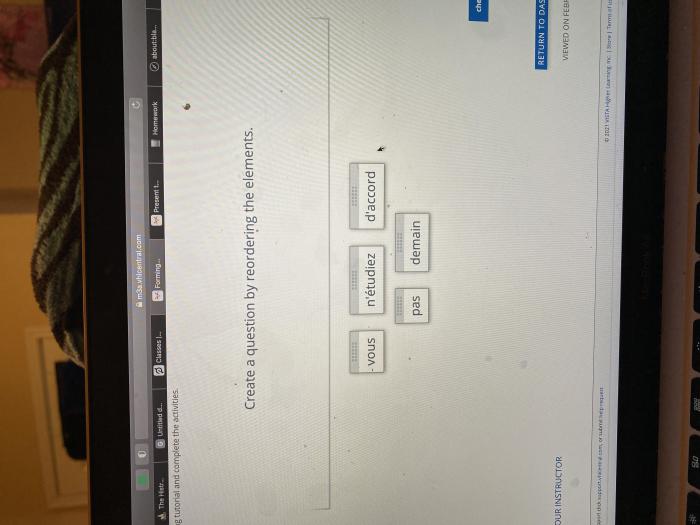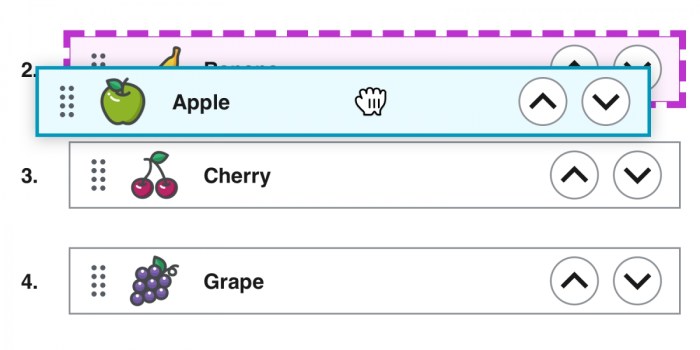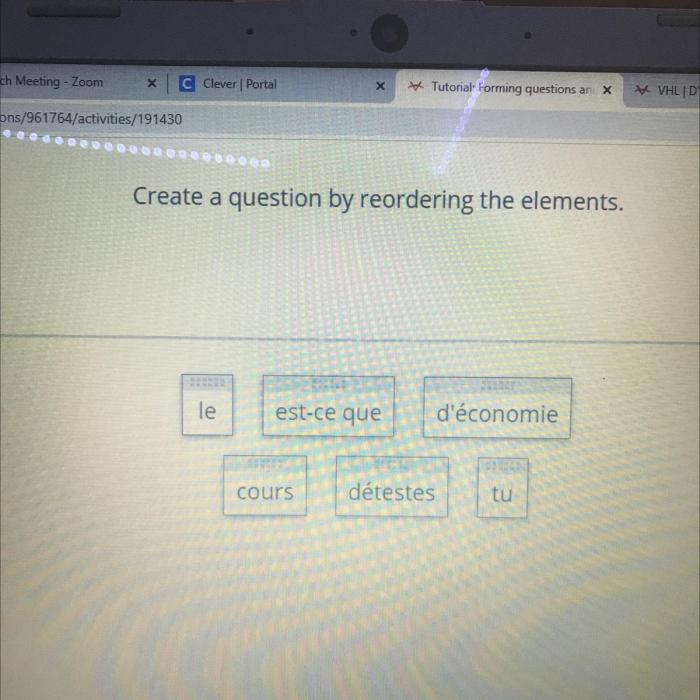Create a question by reordering the elements, a technique that unlocks the power of words to transform a simple statement into a thought-provoking inquiry. This guide delves into the art of rearranging sentence elements to craft effective questions that captivate, clarify, and inspire.
From understanding the concept to exploring various reordering methods, this comprehensive resource provides a roadmap for creating questions that engage, inform, and challenge.
Reordering Elements to Create Questions: Create A Question By Reordering The Elements

Reordering elements in a sentence is a technique used to change the meaning and create questions. By altering the order of words or phrases, we can transform a statement into an interrogative sentence. This technique is particularly useful for creating effective questions in academic writing and discussions.
For example, consider the following sentence: “The student answered the question correctly.” By reordering the elements, we can create a question: “Did the student answer the question correctly?”
Methods for Reordering Elements
There are several methods for reordering elements to create questions. One common method is to invert the subject and auxiliary verb. For instance, in the sentence “The boy is playing,” we can invert the subject “boy” and the auxiliary verb “is” to create the question “Is the boy playing?”Another method involves moving the interrogative word to the beginning of the sentence.
Interrogative words such as “who,” “what,” “where,” “when,” and “why” can be used to create questions. For example, in the sentence “The teacher gave the students a test,” we can move the interrogative word “what” to the beginning to create the question “What did the teacher give the students?”
Creating Effective Questions, Create a question by reordering the elements
Effective questions are clear, concise, and engaging. They should be phrased in a way that elicits specific and informative responses. When using reordering elements to create questions, it is important to consider the following tips:
- Use strong verbs that convey the desired action or information.
- Avoid using vague or ambiguous language.
- Keep questions brief and to the point.
- Use interrogative words appropriately.
Using HTML Tables to Structure Questions
HTML tables can be used to structure questions in a clear and organized manner. By creating a table with rows and columns, we can display questions and their corresponding answers in a visually appealing and easy-to-read format.For instance, we can create a table to display a series of questions and answers related to a specific topic.
The table would have two columns, one for the question and one for the answer. This format allows readers to quickly identify the questions and locate the corresponding answers.
Questions Often Asked
What are the benefits of reordering elements to create questions?
Reordering elements allows for greater flexibility in sentence structure, enabling the creation of questions that are clear, concise, and engaging. It also enhances the effectiveness of questions by emphasizing key information and prompting deeper思考.
How can HTML tables be used to structure questions?
HTML tables provide a structured and organized way to display questions. By creating tables with columns for question elements, you can ensure consistency and clarity in presenting questions, making them easier to read and understand.

